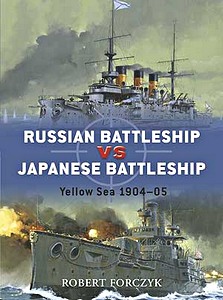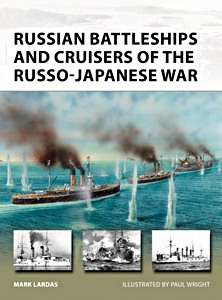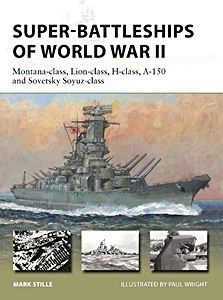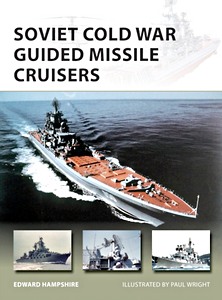Russian Battleship vs Japanese Battleship - Yellow Sea 1904-05 (Osprey)
The first major clash between a European and Asian state in the modern era signalled the beginning of Japan's rise as a major power on the world stage. Watched by the rest of the world's superpowers, this incredibly violent war was disastrous for the Russians who, despite their superior numbers, were defeated by the Japanese underdogs in a spectacular fashion. The key technical elements of firepower, protection, maneuverability and communications for each side are covered in detail and accompanied by first-hand accounts and specially commissioned artwork to explain and illustrate this historically significant duel.
Contents: Introduction - Chronology - Design and development - Technical Specifications: Firepower (main and secondary batteries, fire control, ammunition), protection (armour belts, quality of steel, damage control), Maneuverability (speed, turning ability, sea keeping), communications (internal within ship, with other battleships) - The Combatants: The Japanese Battleship Crew (Composition, individual and crew training, morale, strengths
weaknesses and fleet doctrine), The Russian Battleship crew (same as above) - Combat - Aftermath.
Specificaties
| Auteur: | Robert Forczyk |
|---|---|
| Uitvoering: | 80 blz, 24.5 x 18.5 x 0.7 cm, paperback |
| Illustraties: | Rijk geïllustreerd met foto's en tekeningen (z/w en kleur) |
| Uitgever: | Osprey Publishing (GB, 2009) |
| Serie: | Duel (15) |
| ISBN: | 9781846033308 |

Russian Battleship vs Japanese Battleship - Yellow Sea 1904-05
Taal: Engels
Beschikbaar bij bol.com en Amazon - veilig betalen en snelle levering
Kopen bij bol.comKopen bij Amazon NL
Kopen bij Amazon BE




![Bladzijden uit het boek [TK] Alliierte Schlachtschiffe - GB, F und USSR 39-45 (1)](../afb/details/PP03491.jpg)


